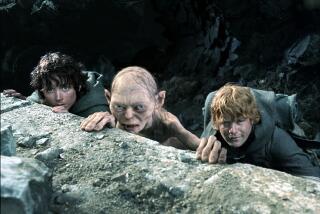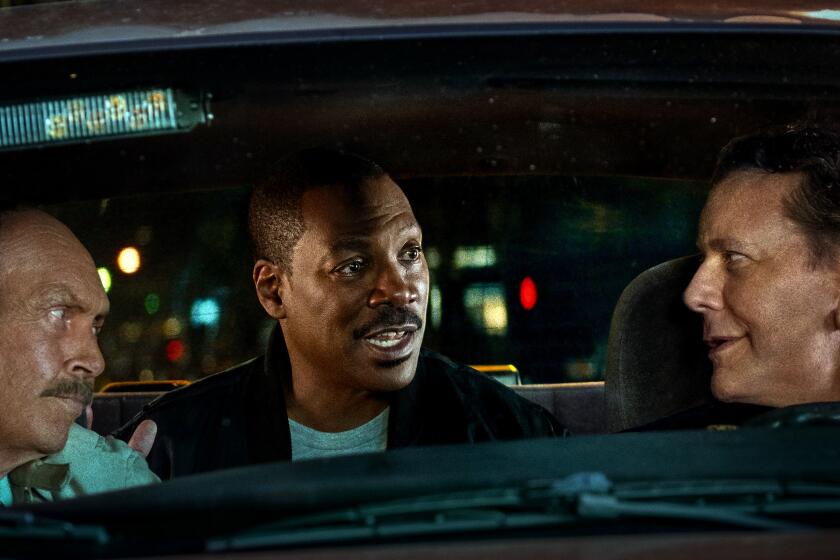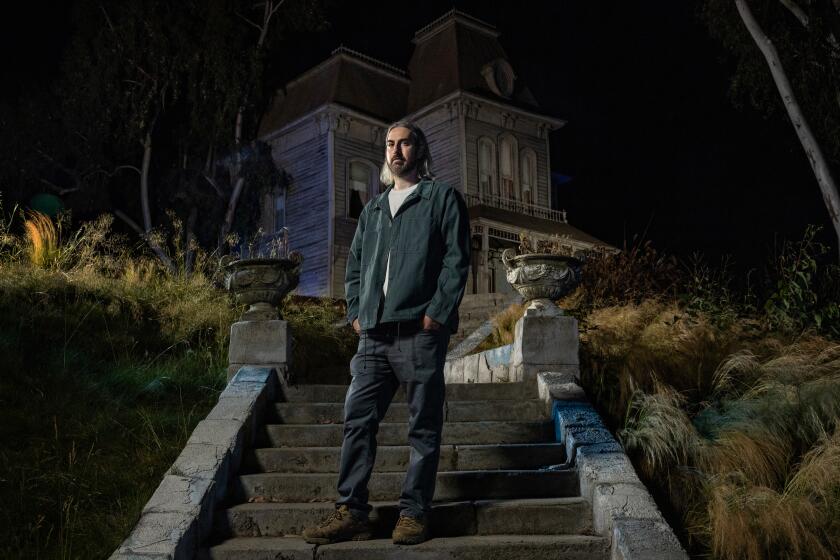‘Mockingjay’: Is it time to end Hollywood’s final-book mitosis?
It was an accident, or at least an anomaly, when it first happened about five years ago. J.K. Rowling’s final Harry Potter book, suffixed “The Deathly Hallows,” would get the two-movie treatment.
As producer David Heyman explained then, the seventh tome in the long-running smash series “is so rich, the story so dense…that two parts were needed to do it justice.” Plus there was the fact that, after six previous films, it wasn’t just Warners bean-counters who wanted to hold on. Fans had lived and died with the books since the first volume came out in 1997, and more than a decade later, they wanted the series to go on just a little bit longer. The studio could be forgiven for satisfying that need.
It happened again shortly after with “The Twilight Saga: Breaking Dawn.” The split made a little less sense this time around—the YA series’ shorter run meant it didn’t exactly merit a Derek Jeter-like farewell tour—but you could allow then-standalone Summit Entertainment an indulgence. The book was a rodent-squashing 700-plus pages, plus the franchise’s second and third films had been rushed out in just a seven-month span. Allow the last book to play out over two movies, the thinking went, and it would restore a little balance.
But it wasn’t long before the splitting of literary wholes into multiple movies turned into a kind of reflexive, illogical norm. Producers of the “Divergent” franchise announced they would extract two films from the final “Allegiant” book. J.R.R. Tolkien’s “The Hobbit” became two movies, then three. And of course the Jennifer Lawrence-starring “Hunger Games” saw its final tome double, from one neat “Mockingjay” film into two—two parts, two years, two buckets of ticket sales.
To those who follow Hollywood, this was an annoying development, if hardly a surprising one. The studio world will almost always choose the sequel and the stretch-out route when possible, taking very literally the fan proclamation that people just can’t get enough.
What’s new, though, is that some fans now seem to be pushing back.
Consider: The opening weekend box office of “Breaking Dawn Part 1” and “Deathly Hallows Part 1” each jumped significantly over their respective previous installments. But the second “Hobbit,” when it came out last year, actually showed a drop, by about 12%.
When the first “Mockingjay” movie opened this weekend, it plummeted even further. The new film garnered $123 million — a whopping 22% drop compared with “The Hunger Games: Catching Fire.”
Now, a $123 million domestic opening is still a nice chunk of change for any new movie — only one other film this year even broke the $100-million mark. But sequels to massively popular YA adaptations generally pick up fans over time. “Mockingjay” has gone the other way. Far from building on the previous movie’s audience, it leaked millions of people.
(Studio Lionsgate will tout the international increases for “Mockingjay – Part 1” over “Catching Fire.” But that’s not really a meaningful comparison—almost all bestselling YA adaptations trend up over time internationally simply because the books will have come out in more territories by the time we get deeper into the film series.)
A big part of why this domestic drop is happening is that Suzanne Collins’ “Mockingjay” novel was never really meant to be two movies. Theoretically, of course, anything could be split into multiple films if you drag out the pace enough, or pile on a sufficient number of new details. But keeping the story true to the book and still winding up with two self-sustaining films just isn’t viable in most cases. It certainly wasn’t here. There isn’t a clear enough breaking point or sufficiently self-contained stories that would allow for two films. (A quick spoiler alert:) The revolution is beginning; Katniss is, after much reluctance, going to be the face of it. And then the film ends.
As my colleague Kenneth Turan wrote, “this is by definition a place-holder film that exists not so much for itself but to smooth the transition from its hugely successful predecessors to a presumably glorious finale one year hence.”
Or as Grantland’s Wesley Morris, noting the time-honored idea of the cliffhanger, put it: “We don’t even get to the cliff.”
Can the franchise rebound? Is this weekend’s number a temporary falloff or a sign that fans, like the discomfited citizens of District 13, have had enough with this trend of literary mitosis? Lionsgate hopes it’s the former. Final installments of YA movies, after all, tend to be the most popular, as fans who’d been sitting on the sideline with a tell-me-when-it-all-ends mindset spring into action. The second part of “Deathly Hallows” had the biggest opening and total of the series. ”Breaking Dawn Part 2” was the second-biggest opening of the series, falling just 0.7% shy of the top spot. And Lionsgate was undeniably smart in how it made these two movies — same director, back-to-back, so that costs were kept down.
Still, it’s far from clear that “Mockingjay – Part 2” will show a rebound and bring back all those fans who walked away from this installment. (In box office terms, this is measured by the magical $400 million mark — the first two films hit it; this one almost certainly won’t.)
Studio economics aside, I wonder if all this book-splitting and franchise-stretching are also missing the larger zeitgeist point. We live in an instant-gratification, binge-watching world. Making fans wait an extra year for a conclusion--trying to manufacture excitement, essentially, with an artificial delay--just doesn’t fit with how most of us want to consume entertainment. Open-ended conclusions and new installments may seem like an of-the-moment, serial-type trend, but it’s not the good kind of “Serial.” Fans of that podcast, in fact, go into an uproar waiting an extra week.
More YA adaptations are coming down the Hollywood road. After this weekend one hopes the film-to-book ratio starts coming a bit more into alignment. Then again, the way the movie business tends to work, it may yet get worse. We may remember this period nostalgically as the time before studios started dividing books into four films.
More to Read
Only good movies
Get the Indie Focus newsletter, Mark Olsen's weekly guide to the world of cinema.
You may occasionally receive promotional content from the Los Angeles Times.







